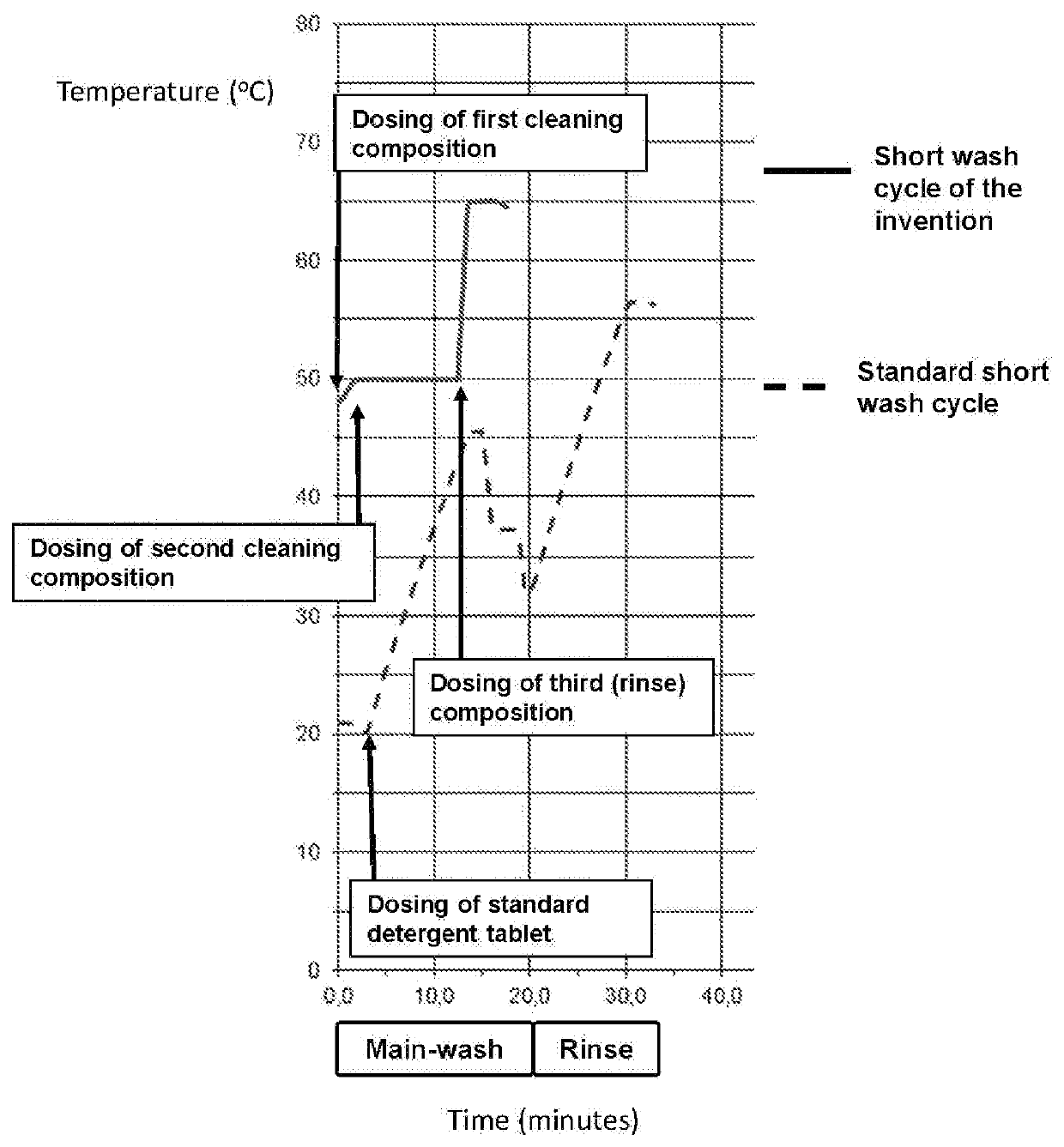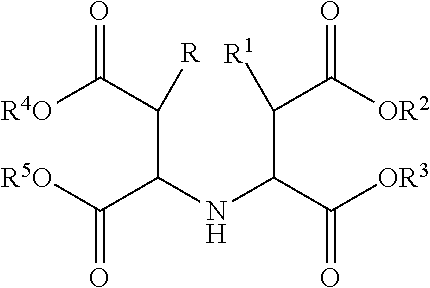Domestic dishwasher and dishwashing method
a domestic dishwasher and dishwashing technology, applied in the field of domestic dishwashing, can solve the problems of reducing water consumption, reducing water consumption, and reducing the efficiency of the machine, so as to reduce water consumption, reduce water consumption, and improve the effect of performan
- Summary
- Abstract
- Description
- Claims
- Application Information
AI Technical Summary
Benefits of technology
Problems solved by technology
Method used
Image
Examples
example 1
on Tough Soils
[0093]To demonstrate the present invention, a single-tank domestic dishwasher (Miele G661) was modified with an additional interface allowing the inventors to control the spray arm rotation speed, water temperature and water drainage. The holes of the spray arm of the upper rack were also modified to allow reduced water usage during certain parts of the cycle.
[0094]According to the (2005) IKW method, cups were stained with tea and glass beakers were soiled with burnt-on milk. These were loaded into the dishwasher, along with stainless steel knives and other glasses that had been prepared according to the IKW method for assessing rinse performance.
[0095]The following compositions were prepared:
[0096]First composition:—the following ingredients were dissolved / dispersed in 0.5 litres of 9° dH water: 2.04 g sodium percarbonate, 3.14 g sodium silicate / MGDA co-granule, 0.70 g TAED, 0.84 g HEDP, 6 mg manganese-based bleach catalyst.
[0097]Second composition—the following ingre...
example 2
[0111]Testing was carried out on a series of lightly- and freshly-soiled dishes, simulating a consumer relevant light load. The dishes were washed using the embodiment of the inventive method set out in Example 1, and compared with an equivalent test in which only water was used. The dishes were examined for evidence of redeposition of soils at the end of the tests. These experiments revealed that using water alone with the same wash cycle profile as the invention is insufficient to avoid redeposition. In contrast, when using the specified detergents in the inventive method, redeposition was significantly reduced overall, and completely avoided for some soils.
PUM
| Property | Measurement | Unit |
|---|---|---|
| volume | aaaaa | aaaaa |
| temperature | aaaaa | aaaaa |
| temperature | aaaaa | aaaaa |
Abstract
Description
Claims
Application Information
 Login to View More
Login to View More - R&D
- Intellectual Property
- Life Sciences
- Materials
- Tech Scout
- Unparalleled Data Quality
- Higher Quality Content
- 60% Fewer Hallucinations
Browse by: Latest US Patents, China's latest patents, Technical Efficacy Thesaurus, Application Domain, Technology Topic, Popular Technical Reports.
© 2025 PatSnap. All rights reserved.Legal|Privacy policy|Modern Slavery Act Transparency Statement|Sitemap|About US| Contact US: help@patsnap.com


